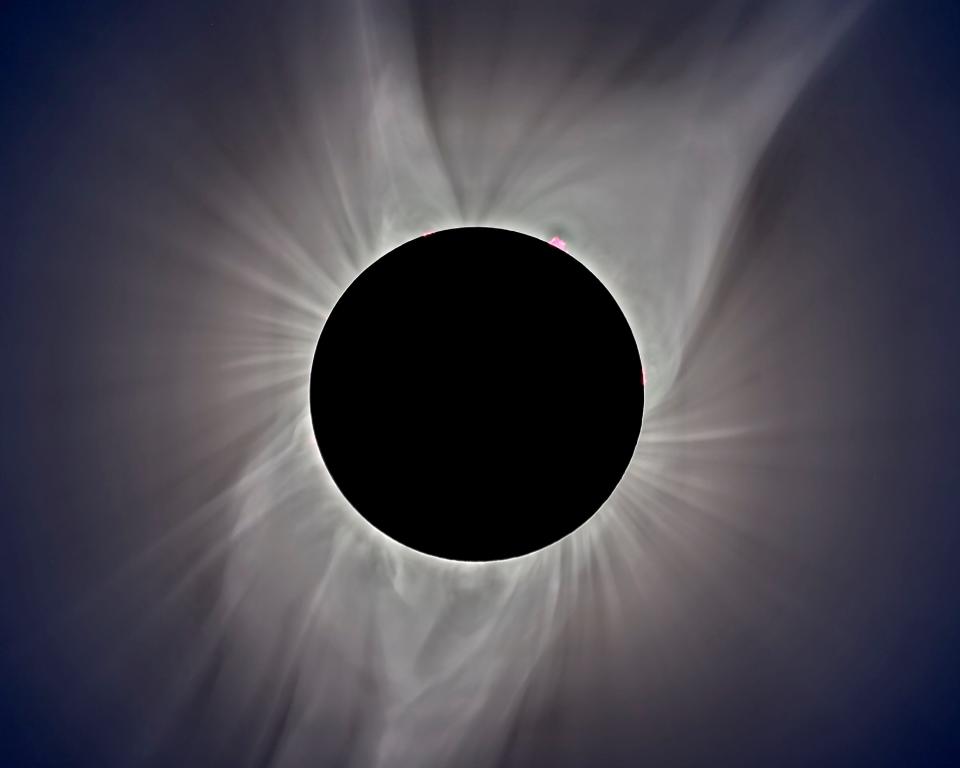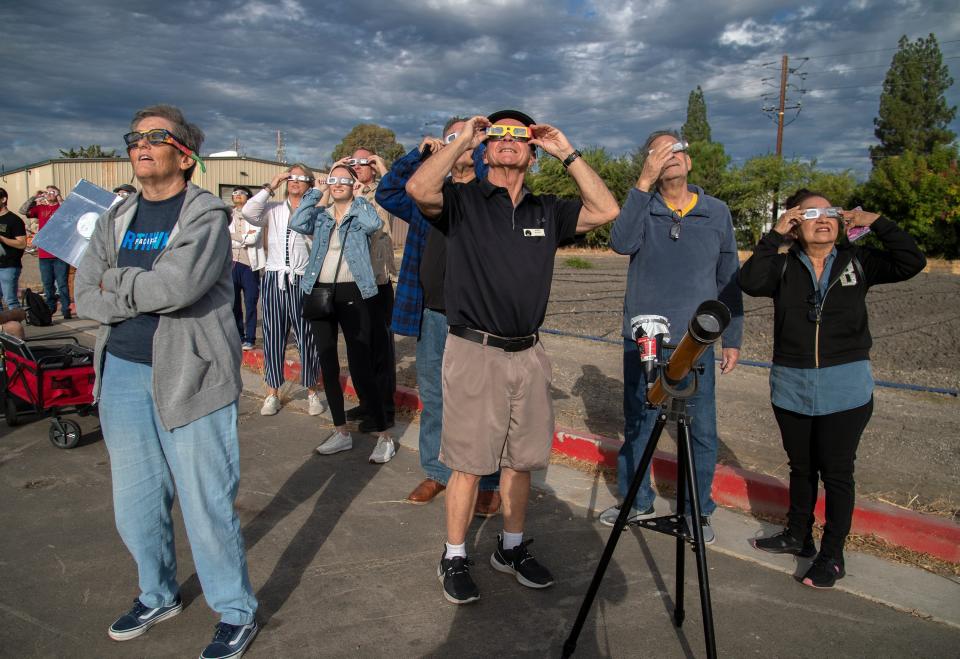The total solar eclipse is one month away on April 8: Here's everything to know about it
A potentially once-in-a-lifetime total solar eclipse is only one month away from shrouding a large swath of the United States in unnatural darkness and unveiling the sun's elusive outermost layer.
There's a reason your friends, neighbors, family and plenty of new outlets (including us here at USA TODAY) have been buzzing all year about the upcoming celestial show.
For one thing, there hasn't been an eclipse like it in North American since the last time the moon completely blocked the sun's disk in 2017. And for another: The upcoming solar eclipse on April 8 is projected to last longer, be brighter and be visible to more people than the one seven years ago, astronomers say.
With just weeks to go until the Great North American Eclipse of 2024, here's everything you know about what's going to happen and how you can (safely) see it.

When is the 2024 total solar eclipse? Your guide to glasses, forecast, where to watch.
What is a solar eclipse?
Any celestial object like a moon or a planet that passes between two other bodies can create an eclipse by obscuring the view of objects like the sun.
A total eclipse occurs when the moon appears as the same size as the sun and blocks the entire disk from Earth, leading to a period of darkness lasting several minutes. The resulting "totality," whereby observers can see the outmost layer of the sun's atmosphere known as the corona, confuses animals – causing nocturnal creatures to stir and bird and insects to fall silent.
A recent study even found that clouds activity is altered by eclipses as shallow cumulus clouds were observed vanishing when the moon obscured the sun.
When and where to see the April 8 total solar eclipse
On April 8, the total solar eclipse will chart a 115-mile-wide path of totality across portions of Mexico the United States and Canada.
In the U.S. alone, hundreds of cities and smaller towns in 13 states lie along the path. An estimated 31 million Americans already live on the path, while millions more tourists are already making travel plans – sure to snarl traffic – to catch a glimpse of what is sure to be a spectacular sight, according to eclipse cartographer Michael Zeiler at GreatAmericanEclipse.com.
Additionally, small parts of Tennessee and Michigan are also expected to experience the eclipse, NASA says.
Mexico's Pacific coast will be the first location in continental North America to experience totality, which will occur at about 11:07 a.m. PDT, according to NASA.
As the moon's shadow travels northeast, totality in the U.S. will begin at 1:27 p.m. CDT in Eagle Pass, Texas. From there, the path will cut diagonally across the country before ending it's time in the U.S. around 3:33 p.m. EDT in Lee, Maine and entering Canada's maritime provinces, according to nationaleclipse.com.
Along the way, periods of darkness could last a mere few seconds or, in some cities, could surpass four minutes. And as if the dazzling solar eclipse won't be enough, there's a small chance that the horned "devil comet" may make an appearance that same day as it makes its closest orbital approach to Earth later in the month.
If you want to see the time and duration for when totality would occur near each of these locations, see these interactive maps.
How to safely view the solar eclipse

Unlike partial solar eclipses, a total eclipse offers spectators a unique opportunity to gaze upon it with the naked eye, but only when the moon completely blocks out the sun and darkness falls.
While you're unlikely to go blind, gazing directly at the sun's rays can do some serious damage to your retinas. So until the moment that totality occurs, proper safety eyewear is still a must, according to NASA.
While some welding goggles may work, the best best remains certified eyewear, which is held to an international safety standard and is 100,000 times darker than most sunglasses to block nearly all visible, infrared and ultraviolet light.
Solar eclipse glasses are readily available from plenty of vendors across the internet, but if you want to save some cash, there's a good chance your local library or another public institution is giving them away for free.
Just watch out for cheap imitations. To make it easy while you're shopping online, the American Astronomical Society maintains a curated list of approved vendors.
Another simple method is to create your own pinhole projector to project the sun onto a nearby surface. The American Astronomical Society offers helpful instructions to set them up as well.
When is the next total solar eclipse after 2024?
Whether you live on the path of totality or need to find the nearest city that will be enveloped in daytime darkness, one thing is for sure: Now is the time to make your plans to see it.
For North America, the next total solar eclipse won't be until Aug. 23, 2044, according to NASA.
Unfortunately, the 2044 total solar eclipse won't have the broad reach across the U.S. as the 2024 eclipse.
The Planetary Society, a nonprofit involved in research, public outreach and political space advocacy, says that during the 2044 eclipse, the path of totality will only touch three states.
The eclipse will begin in Greenland, sweep through Canada and end around sunset in Montana, North Dakota and South Dakota.
Contributing: Gabe Hauari
Eric Lagatta covers breaking and trending news for USA TODAY. Reach him at [email protected]
This article originally appeared on USA TODAY: 2024 total solar eclipse is one month away: Here's what to know
